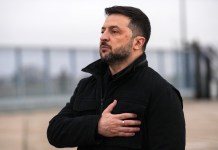Liberation Of Kyiv / Kiev: On November 6, 1943, troops of the 1st Ukrainian Front under the command of Army General Nikolai Vatutin liberated the city of Kyiv from the Nazi troops during the Kyiv offensive operation.
The capital of Soviet Ukraine was captured by German troops in the third month of World War II. On September 26, 1941, the last soldiers of the Red Army, defending the city, left it. On the same day, units of the 6th Wehrmacht army entered the city.
Soviet forces managed to return to Kyiv only two years later. At the end of September 1943, the troops of the Voronezh Front (renamed the 1st Ukrainian Front at the end of October) seized bridgeheads on the right bank of the Dnieper north and south of Kyiv and twice tried to liberate the city.
The main blow was inflicted from the Bukrinsky bridgehead and the auxiliary blow from the Lutezh bridgehead.
On October 24, by order of the Supreme High Command Headquarters, the main forces of the front were transferred to Lyutezhsky bridgehead, where the 3rd Guards Tank Army, the 23rd Rifle Corps, the 7th Artillery Corps and other formations and units were secretly transferred from Bukrinsky Bridgehead. Due to the secrecy of the maneuvers conducted, the enemy did not find a regrouping of Soviet troops.
Thus, the Soviet command was able to provide a decisive advantage in the direction of the main attack. In the offensive zone of the Soviet troops was the German 4th Panzer Army, which included 11 heavily battered infantry divisions. In its reserve, there were only 2 tank divisions, which also did not have time to replenish after losses in the summer battles.
Kyiv itself was defending itself with parts of the 7th Wehrmacht army corps. To protect the city from the north, the enemy built three fortified defense lines with a developed system of engineering fortifications.
After covering the city, the Soviet command planned to launch an offensive from the southern side, where it intended to introduce a powerful strike force into battle. Only in its first echelon were up to 20 rifle divisions, 3-4 tank corps and 1 cavalry corps.
On November 1, the offensive began with the Bukrinsky bridgehead, the main purpose of which was to hold down the enemy’s forces. On the morning of November 3, the main front group struck. After a 40-minute artillery bombardment, Soviet troops unimpededly advanced 1-2 km.
By the end of the day, the troops of the 38th Army, together with the 5th Guards Tank Corps and formations of the 60th Army, advanced 5-12 km. At the same time, the 60th Army was advancing from two neighboring bridgeheads near the villages of Kazarovichi and Glebovka and near the village of Yasnogorodka, covering the right, open flank of the 38th Army from the north and north-west.
The plan of the Soviet command was completely executed by the clock, which rarely happens in war conditions. By the end of the first day of the operation, the 240th Infantry Division, which directly attacked Kyiv and was supported by units of the 7th Artillery Corps, was already in the Kyiv suburb of Pushcha-Voditsa. Even fierce German counterattacks, in which units of the 20th Motorized Division participated, could not prevent this.
Towards the end of November 4, units of the 38th Army, supported by the 5th Guards Tank Corps and the 3rd Guards Tank Army, overcoming the enemy’s fortified defense line, advanced 5-6 km from the north to Kyiv, reaching the suburbs of Priork and the northern border of the city. November 4−5, the 1st Guards Cavalry Corps and the 3rd Guards Tank Army entered the battle, which cut the Kyiv-Zhytomyr highway on the western outskirts of Kyiv.
The liberation of the Ukrainian capital was also helped by the crossing of the Dnieper on November 4 by the forces of the 237th Infantry Division in the area of Kazachy Island, which is opposite the villages of Vita-Litovskaya and Pirogovo, located 15 km south of Kyiv. At Vita-Litovskaya, Soviet units were able to ride the highway leading to Kyiv along the Dnieper.

Thus, the Germans could not send reinforcements to Kyiv from the Bukrinsky bridgehead area. Under these conditions, the German command considered the further holding of positions in the Kyiv region dangerous. There was a risk of repeating the fate of the Soviet group, which was surrounded here two years ago, following the order of the Headquarters to hold Kyiv at any cost.
To avoid the boiler, in the morning of November 5, the enemy began a general retreat along the highway to Vasilkov. By the morning of November 6, Soviet units entered the city – Kyiv was liberated.
The operation to liberate Kyiv is characterized by important strategic and political results and quite logically chosen directions of attacks bypassing Kyiv (cutting two highways leading from the city to the south and west). For the operation, the necessary number of troops was allocated who completed all the tasks.
Besides, the moment of the operation was chosen very competently. Thanks to intelligence, the Soviet command was aware that in early November, the command of Army Group South could not use their mobile reserves near Kyiv in the person of armored and motorized divisions.
The fact is that at this time, the Germans planned a counterattack in the lower reaches of the Dnieper – at Kryvyi Rih, Apostolovo and Nikopol. This was one of the important factors why the fighting for the liberation of Kyiv for the German side degenerated as a whole into a passive withdrawal and a series of holding-back battles.
Building on success, on November 7, Soviet troops liberated Fastov, and on November 13, Zhytomyr. Parts of the 7th German Army Corps stopped their withdrawal only 50 km south of Kyiv. The 60th and 13th armies, which continued the offensive, reached the line north of Narovli, Yelsk, Ovruch, and east of Korosten by the end of the month.
Ruslan Maksimovic




